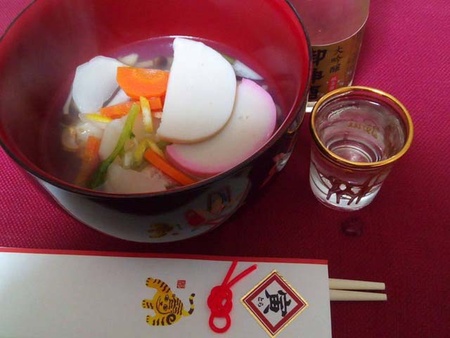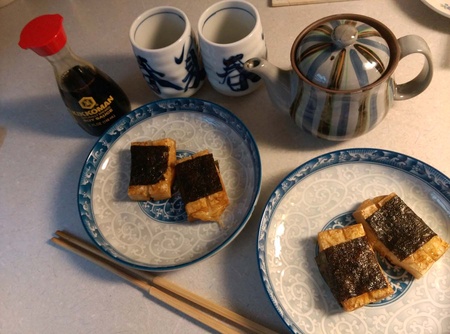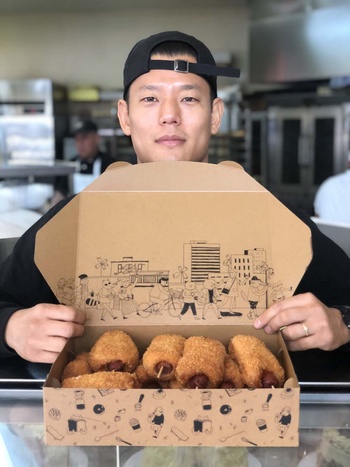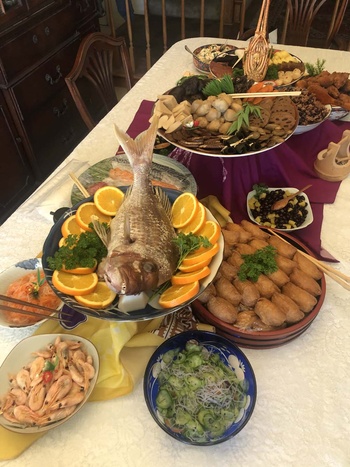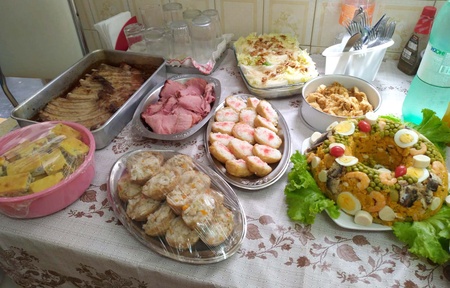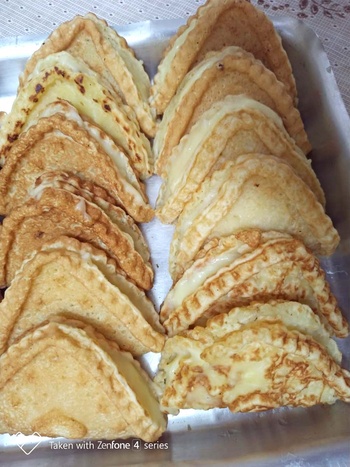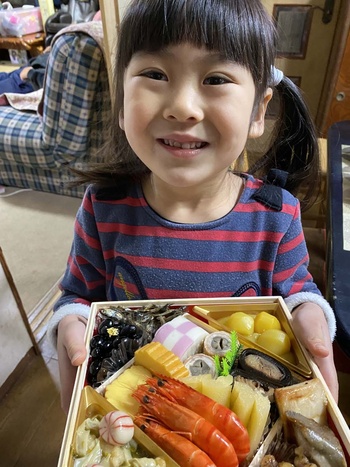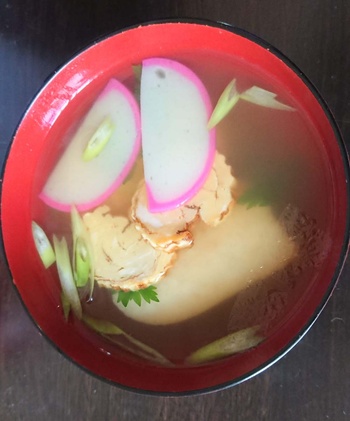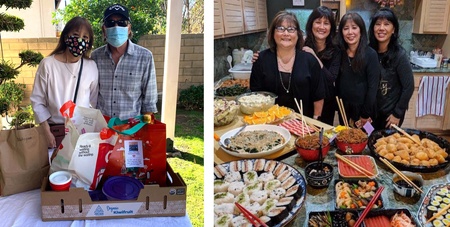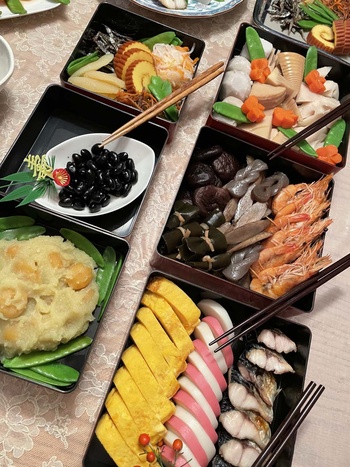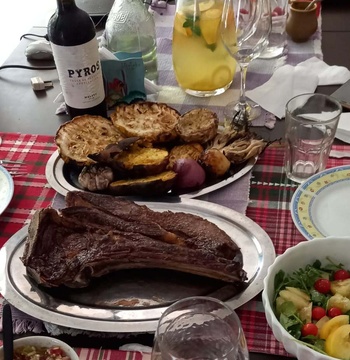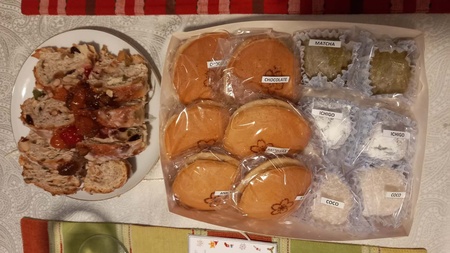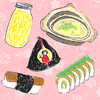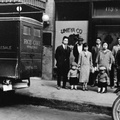Nima-kai Traditions: Oshogatsu Foods 2022
After another long, trying year, Nikkei around the world celebrated Oshōgatsu 2022 with just as much joy as ever. They gathered when it was safe, met virtually when it was not, cooked up delicious osechi foods they normally buy or eat at parties, and toasted to a better new year. In our January e-newsletter, Discover Nikkei put out a call for photos sharing the foods Nikkei were eating to celebrate the new year around the world. We received submissions in English, Japanese, Spanish, and Portuguese.
A Discover Nikkei volunteer, Alison Skilbred, has compiled all of the photo submissions into a video (guaranteed to make you hungry!). We also asked people to share the stories behind the photos. A selection of these are shared below, with translations and lightly edited for clarity and consistency.
We wish you a safe and healthy new year. Enjoy!
* * * * *
Vicky Murakami-Tsuda (Gardena, California, United States)
Despite the pandemic and recovering from surgery, thanks to my husband, family, and friends, we still managed to celebrate the new year with toshikoshi soba and a non-alcoholic sparkling yuzu drink at midnight and ozoni on New Year’s Day. Definitely need the good luck & health for the year!
Alyson Iwamoto (Los Angeles, California, United States)
Three generations of Iwamotos huddled around my computer to ring in the new year. Here is my daughter, Aiko, enjoying my first attempt at ozoni using community cookbooks as my guide. Only now do I truly appreciate all the time and love that went into cooking the Oshogatsu food that I love so much.
Alberto Matsumoto (Yokohama, Kanagawa, Japan)
We ate our ozoni with a Japanese sake. In Japan, there are different varieties of ozoni because each region has its own version. When I was in Argentina, ozoni that I ate with my parents was a miso-based soup. There were vegetables, chicken, and mochi in it. Sometimes we added anko-mochi (mochi with sweet bean paste). Now I’m in Japan, and since my wife is from Tokyo, we eat ozoni with soy sauce or konbu-dashi (kelp based) soup and add vegetables and kamaboko (fish cake). I’ve gotten used to it, but I do miss the flavors of my childhood.
Linda Austin (St. Louis, Missouri, United States)
Wherever I have lived, from the Midwest to Florida and Alabama, I have been able to find mochi rice cakes to fix on New Year’s Day. This was amazing back in the 1980s in areas where there were few people of Japanese heritage. I also do osouji to rid the house of old dirt and get ready for the new—and I admit to going overboard, doing way more than my mother ever did!
Michelle Hirose (Los Angeles, California, United States)
Sausage Donut is a special item that is only available twice a year (pre-COVID), the two weekends of Nisei Week Japanese Festival in August and the other being New Year’s Day. For the past four years, it’s been a tradition to pick up a box of a dozen Sausage Donuts on New Year’s Eve from James Choi, the owner of Cafe Dulce.
Over the years, more non-traditional Japanese New Year’s dishes have been put on the New Year’s menu like Chinese Chicken Salad, Won Tons, Spam Musubi, etc. These dishes are definitely Japanese American potluck staples so therefore, at some point, our family created a separate table for these dishes. However, on the main table is where we have our osechi beautifully displayed and I just enjoy picking at the different dishes all day while we talk story.
Laura Hasegawa (Londrina, Paraná, Brazil)
Cooking is my friend Amélia’s forte and on Oshogatsu she outdoes herself in the preparation of delicious dishes, much to everyone’s joy. It’s a smorgasbord of delights, of both Japanese and Brazilian cuisine, don’t you think so?
Amélia Oki (São Paulo, SP, Brazil)
I love preparing Japanese dishes on Oshogatsu. And this dorayaki is very special to me. I’d been wanting to buy the dorayaki mold for the longest time, but I couldn’t find it anywhere. I have a 90-year-old acquaintance named Sato-san who learned about that and told me, “I’m going to give you the mold that belonged to my mother.” Now every time I make dorayaki, I get emotional remembering Sato-san’s kindness and graciousness.
Yoko Nishimura (Los Angeles, California, United States)
My son participated in the mochitsuki event at the Zenshuji Soto Mission temple in Los Angeles, California, on December 19, 2021; everybody had to wear a mask due to Covid. This was technically his second mochitsuki experience, but he does not remember the first one. He enjoyed eating mochi more than mochitsuki. I would like my son as a Nikkei to experience Japanese traditional activities here in the US as much as possible.
Asami Goto (Tokyo, Japan)
This is my 3-year old daughter Lea. She loves shrimp. She found the shrimp tsuyani (a type of cooking that uses mirin to create a glaze) in her osechi and was very excited on the morning of New Year’s Day!
Because of the curved back and long whiskers, shrimp often symbolize people who’ve lived long lives. Accordingly, shrimp is often included in osechi in order to wish for a healthy year and long lives until we have hunched backs. Cheers to another year in good health!
Mary Sunada (Cerritos, California, United States)
My family welcomed 2022 with traditional Oshogatsu. We toasted with sparkling cider, said “Akemashite Omedeto Gozaimasu,” and ate Ozoni. All day long we piled our plates with shiitake, nishime kombu, satoimo, konyaku, kimpira gobo, renkon, kamaboko (red and white), kuromame, sashimi, sushi, teriyaki chicken, white rice, and hot tea to bring us good health, wealth, and longevity. We ended our day celebrating Mom’s 74th birthday and New Year’s Day together with hope and joy.
Monica Kogiso (Buenos Aires, BA, Argentina)
It’s a family tradition that every year my mom prepares osechi ryori for the new year. She organizes during that week to get all the ingredients. It is a difficult task to make an osechi as in Japan, but usually a few days before she prepares nimono with daikon, konnyaku, shiitake, takenoko, etc. and when she gets gobó (burdock) she makes kimpira gobó. She prepares the kombumaki, kinton, and kuromame.
On the day, before the guests arrive, she prepares the sanshoku maki, tamagoyaki, and ebi furai. She also puts in the jubako the kamaboko that is either bought or sometimes she makes it. Every year both my friends and relatives wait for my mom’s osechi photos and we wait a whole year to eat this delight!
New Year in Argentina is summertime! The ozoni is a must despite the heat!
When there are sakura leaves, there is sakura mochi, a delight we all love!
André Shishido (Curitiba, Paraná, Brazil)
At the end of the year, my family always gets together in order to celebrate Christmas and New Year. During this time, many family members also have their birthdays. As part of our tradition, mainly in each one of those dates, my family makes a special, at least uncommon, dish. Included are photos from an aunt’s birthday and also the Christmas meal. It is a mix of Brazilian and Japanese dishes. We made chirashi sushi, chicken, a kind of mayo with potatoes (very common as a side dish in Brazilian barbecues), and sashimi. I would say that this period is almost a New Year’s week, during which my family and I eat and have fun together.
Kylie Tsudama (Gardena, California, United States)
This photo shows most of the foods we have traditionally eaten on my grandpa’s favorite holiday, New Year’s Day. We’ve always gathered as a family, spent time cooking traditional dishes together, and eaten as a family, starting with Ozoni in the morning and ending with a big meal.
Melissa Meza (South Pasadena, California, United States)
When our grandmother passed, her recipes went with her. One year, we opened up our Japanese church cookbooks and each chose one traditional recipe to make for New Year’s Day. Our first Osaki Sisters Oshogatsu included ozoni, inari sushi, green beans gomaae, and teriyaki beef rolls. Over two decades later, the selection has grown and the next gen of Osakis are making their own contributions to the spread. During COVID, we packed our dishes, met outside (masked and socially distanced), and shared to-go style with each other. We’re happy that our Oshogatsu family tradition will continue for generations to come.
Sachiko Ozaki Oates (Santa Barbara, California, United States)
After having two children in the US, I felt it is important that I share the New Year traditions, including special dishes, with them. We talk about the meaning of each food item in osechi (long and healthy life, success and prosperity, peace and stability, good harvest, etc.) Even though it is not typical, sukiyaki is our New Year’s day dinner according to the family tradition and to honor my late grandfather who started the tradition in Japan. It’s our favorite nabe-ryori.
Mickie Okamoto (Montebello, California, United States)
This is a picture of my mom’s annual Oshogatsu. Almost everything is made from scratch, including the kuromame. Oshogatsu is my mom’s annual Superbowl. She starts shopping and cooking days in advance. Prior to the pandemic, she would cook for over 20 guests!
Ozoni is a fun Oshogatsu dish where there are so many variations based on region/family recipe etc. My family’s is very simple. Katsuobushi dashi, konbu dashi, chicken dashi, a dash of soy sauce, and the fixings. New Year’s is not complete without this simple ozoni.
Robin Vanneman, submitting on behalf of Akemi Vanneman (Burbank, California, United States)
These are different dishes that she made for New Year’s—it’s a montage of photos of her osechi Ryori. You will see kamaboko, kazunoko, kohaku namasu, shrimp, ozoni, etc. These are significant to me because my mom prepares this every year, by herself. She turns 75 this year and will take her time over the course of days to prepare these small dishes.
I don’t think there is anything more “Japanese” to me then osechi—it’s about perfectionism, presentation, and precision. It embodies the exact characteristics that I feel separates Japanese culture from the rest. It cannot be rushed and every single item has a deeper meaning than just being delicious. They represent culture, history, and people.
My mother is from Japan and I am grateful that though I was born in the US, I spent every summer growing up going there, having spent up to 20 trips and a minimum of 6 weeks each time with my family. I hope to pass these dishes down with my mother’s style incorporated to my own children one day and keep the tradition alive for generations to come. Bonus is that the table runner pictured was also hand sewn by my very talented mother.
Hitomi Miyashiro (Buenos Aires, BA, Argentina)
During the New Year holidays in Argentine Nikkei families, there is always both Argentine and Japanese food—Argentine meat, from steaks to the typical asado, and also a a traditional Italian dish, Vitel toné, which is beef with tuna, anchovy, and mayonnaise sauce.
Makizushi and inari, are other dishes that are eaten during this time. And the heat merits a harusame sunomono and a fresh salad with mango and fig! Nitsuke and kakuni are other special dishes to eat this holiday season.
During coffee time, it deserves a Pan dulce, a tradition that comes from Spain and a homemade dorayaki made by Nikkei entrepreneurs.
* * * * *
We hope you enjoyed these Oshōgatsu photos and stories! There is also one more submission we have published separately. Visit our Nima-kai Traditions page for upcoming and past photo activities!
What Is Nikkei Food?
Saturday, February 26, 2022
Join Discover Nikkei for a multilingual, virtual program exploring the topic of Nikkei food with a presentation, small group discussions, and optional networking opportunity following the program.
Learn More
© 2022 Kimiko Medlock




